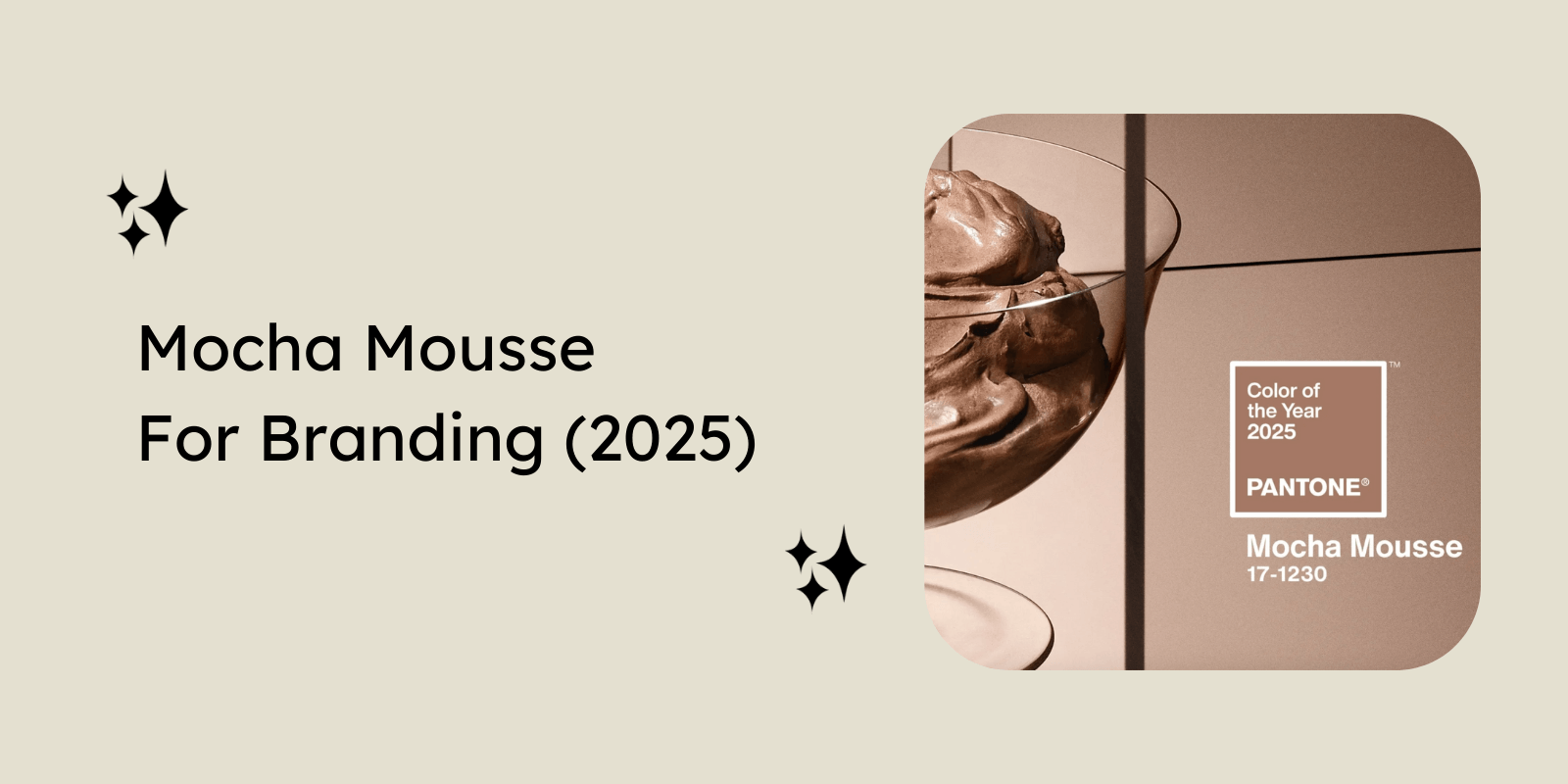When it comes to branding, consistency is everything.
Consumers engage with brands across multiple touchpoints—social media, websites, emails, and print. On average, it takes 6-8 interactions before they consider making a purchase. That’s why brands must stay active across multiple platforms to reach their audience effectively.
However, maintaining a unified brand identity becomes challenging with many channels. Without clear guidelines, inconsistencies creep in, weakening recognition and trust.
That’s where brand guidelines come in. They act as a blueprint, ensuring every interaction—online or offline—feels unmistakably yours.
In this guide, we’ll show you how to create brand guidelines that keep your identity strong, cohesive, and instantly recognisable.
What Are Brand Guidelines?
Brand guidelines are a set of rules that define how your brand should be presented across all platforms. They ensure consistency in visuals, messaging, and tone, helping you create a recognisable and cohesive brand identity.
They outline essential elements like logo placement, colour palettes, typography, imagery style, brand voice, etc. These guidelines serve as a reference for teams, designers, and marketers, ensuring that every piece of content—whether a social post, ad, or website—maintains a consistent look and feel.
Why Are Brand Guidelines Important?
Here’s why brand guidelines are important:
Building a Consistent Identity
Consistency builds trust. When a brand looks and sounds the same across all platforms, it becomes more recognisable and reliable in the eyes of its audience. Think of brands like Apple and Nike—their logos, colours, and messaging are instantly familiar, making them stand out in a crowded market. Brand guidelines help create this consistency in every interaction.

Streamlining Communication
Different teams—marketing, design, sales, and even external agencies—may interpret your brand differently without clear brand guidelines. A structured guide aligns everyone, ensuring that visuals, tone, and messaging stay uniform across all materials. This keeps your brand image strong and prevents mixed messaging that can confuse your audience.
Saving Time and Resources
Brand guidelines eliminate guesswork. Designers don’t have to go back and forth on approvals, marketers don’t need to tweak every campaign for alignment, and agencies don’t have to ask for brand assets repeatedly. With a well-documented guide, everyone knows exactly what’s expected, reducing revisions and speeding up the creative process. This saves time, effort, and resources while ensuring high-quality, on-brand content.
What Should a Brand Guideline Include?
If your brand guidelines aren’t prepared properly, you risk losing control over how your brand is perceived. Even the most recognisable brands can become inconsistent, confusing, and forgettable without clear guidelines. Here’s what your brand guidelines should cover:
1. Visual Identity
Your visual identity is how people recognise your brand at a glance.
It includes everything from your logo to the colours and imagery you use. The goal is to create a consistent look and feel, no matter where your brand appears, so your brand doesn’t become forgettable.
For instance, Coca-Cola has used the same red and white colour scheme for over a century, making its brand instantly recognisable in any market. This consistency ensures that it still feels like Coca-Cola whether you see a billboard, a can, or an ad.
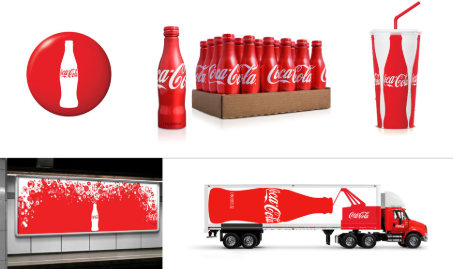
Key Elements of Visual Identity:
- Logo Usage – Your logo is the most recognisable element of your brand, and how it’s presented matters. Guidelines should specify logo size, clear space around it, and approved variations.
- Typography – Fonts contribute to a brand’s personality and readability. So, it should be well-defined which fonts to use for headings, body text, and subheadings, along with rules for sizing and formatting.
- Color Palette – Colors evoke emotions and associations, making them crucial to brand identity. Brand guidelines should define primary and secondary colours and HEX, RGB, and CMYK codes for digital and print usage.
- Imagery – Specifies the style, tone, and composition of photographs, illustrations, and graphics. This ensures all visual elements align with the brand’s personality and messaging.
- Iconography – Icons help create a visual language for your brand. They should be designed in a consistent style, whether minimalist, geometric, or detailed.
2. Voice and Tone
Your brand’s voice and tone define how you communicate with your audience.
A strong, consistent voice builds recognition, while an adaptable tone ensures the message resonates across different platforms. Whether your brand is playful, professional, or authoritative, having a clear voice makes it feel more human and trustworthy.
For instance, Apple maintains a minimal, confident, and straightforward voice across all its marketing and product descriptions. Whether it’s a keynote presentation, a website banner, or product packaging, Apple’s communication remains simple, elegant, and focused on innovation.

Key Elements of Voice and Tone:
- Brand Messaging – A brand’s messaging includes key phrases, taglines, and values that define what it stands for. These messages should be consistently communicated across all marketing materials to reinforce brand identity and create a lasting impression.
- Voice – A brand’s voice is its personality in communication—whether formal, friendly, authoritative, or conversational. It should remain consistent across all platforms to make the brand recognisable and reliable in the audience’s mind.
- Tone – While voice stays consistent, tone adapts to the platform or situation. A social media post may have a casual tone, while a corporate email requires a more professional approach.
3. Brand Applications
Your brand doesn’t just exist in one place—it appears on websites, social media, print materials, and more.
Every touchpoint must reflect the same identity to maintain a unified brand experience. Without clear application guidelines, branding can become inconsistent, making it harder for customers to recognise and connect with your business.
For example, Starbucks ensures consistency across all platforms—from its website and mobile app to in-store experiences and printed materials. Whether you see a Starbucks coffee cup, an Instagram post, or a promotional banner, the branding elements remain instantly recognisable.

Key Elements of Brand Applications:
- Website Design & UI/UX Guidelines – Defines how branding should be applied to digital platforms, including layouts, typography, colour schemes, and user experience elements.
- Social Media Branding – Outlines content styles, templates, and filters to ensure a consistent look and feel across platforms like Instagram, LinkedIn, and Twitter.
- Print & Offline Applications – Covers branding for business cards, packaging, brochures, and store signage to ensure consistency in physical materials.
4. Rules for Third Parties
If external partners, agencies, or collaborators use your brand, guidelines ensure it’s represented correctly. Without clear rules, your logo, messaging, or colours could be misused, weakening your brand’s impact.
For instance, Adidas enforces strict guidelines for co-branded products, ensuring that partnerships with brands like Gucci or Prada maintain Adidas’ design elements while allowing creative collaboration. This protects Adidas’ brand identity while benefiting from strategic partnerships.

Key Elements of Third-Party Rules:
- Co-Branding – Defines how partnerships should represent both brands equally while ensuring integrity remains intact.
- Licensing – Specifies what brand assets can and cannot be used by third parties, including logo placement, colours, and messaging rules.
5. Dos and Don’ts
Below are key dos and don’ts to ensure proper brand implementation across all platforms.
The Do’s
- Include instructions on how to use the brand assets – Provide clear guidelines on logo placement, typography, and colour usage to maintain consistency.
- Be clear about how the design will be used in different settings – Specify how branding elements should appear in digital, print, and co-branded materials.
- Keep your brand guidelines current – Regularly review and update guidelines to reflect branding changes and evolving market trends.
- Include rules for the brand’s tone of voice and language – Define whether the brand should sound formal, friendly, playful, or professional.
- Define your brand’s differentiator – Ensure that guidelines highlight what makes your brand unique in its messaging, visuals, and positioning.
The Don’ts
- Don’t make the same rules for each digital channel – Adapt guidelines for different platforms while maintaining brand consistency (e.g., Instagram visuals vs LinkedIn tone).
- Don’t list assets with no instructions attached – Providing a logo file without context on how to use it correctly can lead to inconsistent branding.
- Don’t forget brand vision and purpose – Your brand guidelines should go beyond aesthetics and support your mission, values, and messaging.
- Don’t neglect to include the target audience – Brand messaging and visuals should always be created to resonate with the intended audience.
- Don’t forget to upload more logo variations – Ensure that different formats (SVG, PNG, JPG) and variations (monochrome, stacked, horizontal) are available for various uses.
- Don’t allow unchecked third-party usage – Set clear rules for partnerships, sponsorships, and licensing to prevent brand misrepresentation.
How to Create a Brand Guideline
These steps create a structured, clear, and compelling brand guideline.
Step 1: Define Your Brand’s Core Purpose
Your brand’s mission, vision, and values form the foundation of your identity. Your mission defines what you do, your vision sets future goals, and values shape your principles. These elements ensure every branding decision aligns with your brand’s long-term direction.
Step 2: Identify Your Target Audience
Understanding how your audience perceives your brand is crucial to building a strong identity. Define your target audience through market research and buyer personas, considering demographics, behaviours, and engagement patterns. When branding aligns with audience expectations, it builds trust and lasting connections.
Step 3: Audit Your Existing Branding
Before setting new rules, step back and see where your brand stands. Look at your current logo, colours, fonts, messaging, and visuals across all platforms. Spot inconsistencies, outdated elements, or areas that feel disconnected. A brand audit helps you refine and improve your identity before moving forward.
Step 4: Build a Strong Visual Identity
Your brand’s look and feel should be instantly recognisable. That means defining your logo, typography, and colour palette to align everything visually. Document exact logo variations, font choices, and colour codes so no one has to guess. Tools like Canva, Figma, or Adobe Illustrator can help design and refine these elements more easily.
Step 5: Define Your Brand’s Voice and Tone
Your brand should sound like the same person everywhere—whether in emails, social media, or customer support. Your voice stays consistent, but your tone might shift depending on the situation. Map out how your brand should sound and when to adjust the tone for different contexts, like customer service vs. marketing campaigns.
Step 6: Create Templates to Keep Branding Consistent
Once your brand elements are set, make them easy to use by creating templates for social media, email campaigns, presentations, and internal documents. These templates save time, reduce design mistakes, and ensure everything stays on-brand. Platforms like Canva and Adobe CC Libraries help create and store reusable templates for teams.
Step 7: Get Input from Your Team
Your brand guidelines should work for everyone who touches your brand—from designers to marketers to leadership. Share your draft and gather feedback. If something feels unclear or complicated to follow, tweak it. The more practical your guidelines, the more likely people will use them.
Step 8: Store, Organize, and Keep It Accessible
A great brand guideline is useless if no one can find it. Store it in an easy-to-access place like Frontify, Canva for Teams, or Adobe CC Libraries. Ensure it’s structured well, with clear visuals, messaging, and application sections. Add real-world examples of what to do and what not to do so there’s no room for confusion.
Tools to Help You Create Brand Guidelines
Here are some tools to keep your branding structured, accessible, and collaborative:
Online Tools
If you want to design sleek, well-structured brand guidelines, Frontify, Canva, and Adobe Spark are great choices. They offer templates and customisation options, making creating a professional brand guide easy—even if you’re not a designer.
Collaboration Platforms
Brand guidelines should be easy to update and accessible to everyone. Notion, Google Docs, and Figma for Teams allow different departments to contribute, provide feedback, and ensure branding decisions are aligned across teams.
Content Management Systems
If your brand assets are scattered everywhere, Bynder and other DAM (Digital Asset Management) software can help you keep all your brand guidelines, logos, templates, and visuals in one place, making it simple for teams to find and use them correctly.
Best Practices for Maintaining and Updating Brand Guidelines
Here’s how you can keep your brand guidelines relevant and effective:
1. Periodic Reviews
Set a schedule to review your brand guidelines at least once a year to ensure they align with your business goals. Significant changes, such as rebranding, new products, or market shifts, should initiate an update to reflect the latest brand identity.
2. Ensure Accessibility
Your brand guidelines should be easy to find and use. Store them on cloud platforms, intranet systems, or dedicated tools like Frontify so designers, marketers, and external partners can access them when needed.
3. Train Your Team
Make sure everyone understands how to use the guidelines correctly. Hold onboarding sessions for new hires and refresher courses for existing teams to improve consistency and prevent branding mistakes.
4. Collect Feedback
Your brand guidelines should be practical and user-friendly. Encourage feedback from the people using them daily—designers, marketers, and content creators—to improve clarity and make updates as needed.
What’s the Difference Between a Brand Guide and a Style Guide?
A brand guide defines your brand’s visual identity, including logos, colours, typography, and imagery. It ensures consistency in how your brand appears across all platforms. A style guide, on the other hand, focuses on written communication, covering tone, grammar, and word choices to maintain a unified voice.
A brand guide means how your brand looks, while a style guide defines how it sounds. Some brands combine them into one document, but one focuses on design and the other on language. Together, they create a cohesive brand experience.
Brand Guideline Examples
Here are five well-known brands with well-documented brand guidelines:
1. Spotify

Spotify’s brand guidelines highlight the importance of proper logo usage, specifying minimum sizes and clear space to maintain legibility and impact. The guidelines also detail the appropriate contexts for using the Spotify icon alone versus the full logo, ensuring consistent representation across various applications.
2. Netflix

Netflix provides complete guidance on logo application, including specifications for minimum clear space and appropriate contrast ratios to ensure visibility. The guidelines also highlight acceptable and unacceptable logo treatments, such as avoiding the use of a white logo, except as a video watermark, to maintain brand integrity.
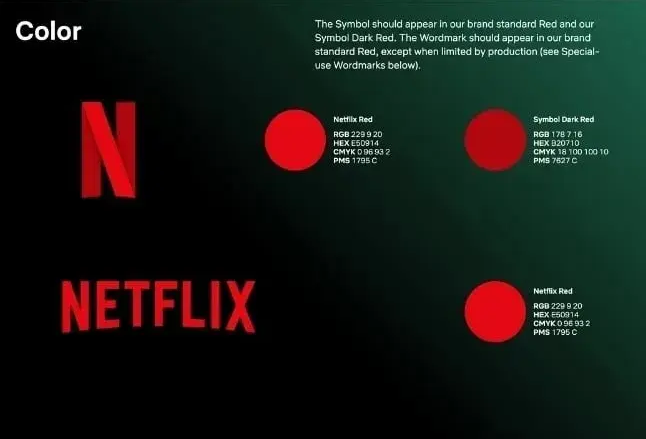
3. Burger King
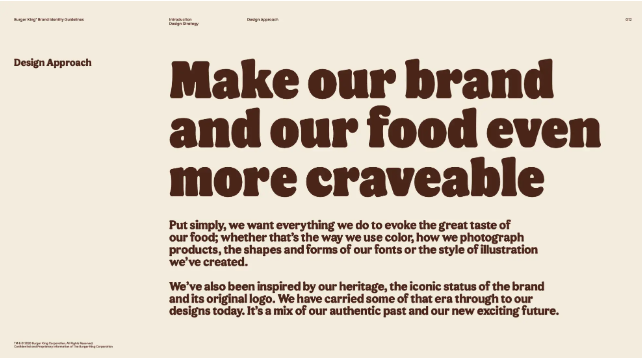
Burger King’s brand philosophy centres on making its food “even more craveable,” which extends to its custom-designed font. The typeface evokes the shapes of its food items, creating a cohesive and appetising brand image.

4. Starbucks
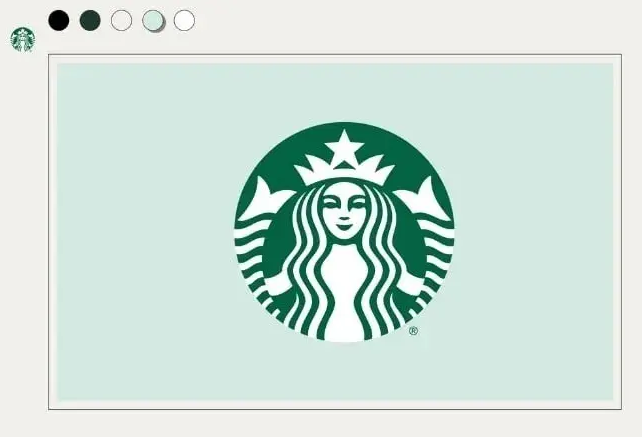

Starbucks offers an interactive brand style guide detailing the use of core elements like the iconic Siren logo and green colour palette. The guide provides a visual scope demonstrating how creative assets can be applied across different channels, ensuring a unified brand presentation.
5. Walmart
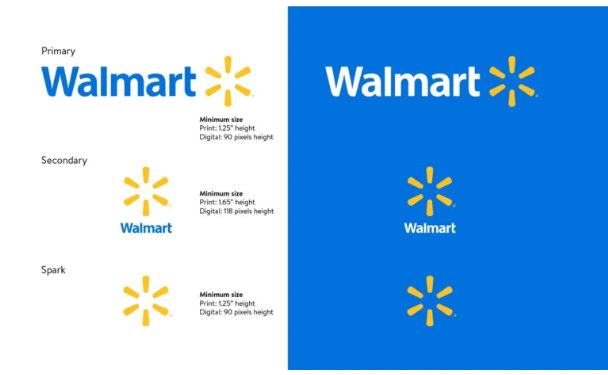
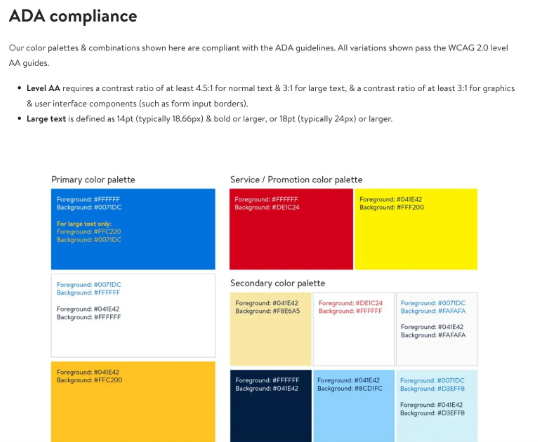
Walmart’s brand guide encloses various elements, including logo usage, photography, typography, illustrations, iconography, voice, and editorial style. The colour palette is crucial for its identity, and the primary colour, “Walmart Blue,” highlights its significance in the brand’s visual representation.
Also read: Birkenstock’s branding strategy breakdown and lessons to take home
Conclusion
If you’ve struggled to keep your brand consistent across different channels, now is the time to establish clear brand guidelines.
A well-documented brand guide can solve that, ensuring your logo, voice, and design elements stay uniform across every touchpoint.
Need help? Reach out to us today.



